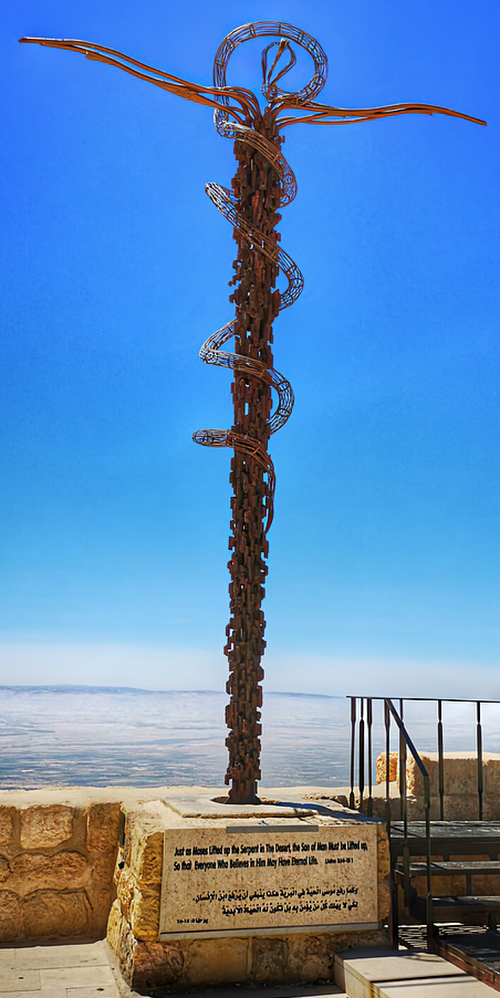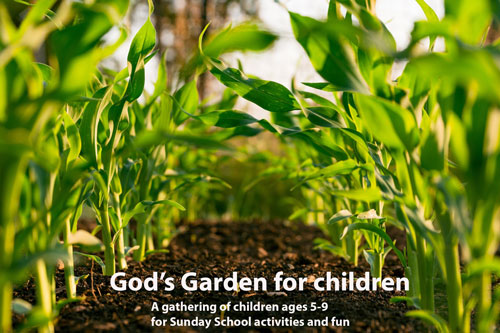
The verses before the familiar John 3:16 recall the text from Numbers 21 that is the Lent 4B reading from Hebrew scripture. Moses is instructed to make a metal snake and place it on a pole. That episode is what is called to mind before we are reminded of how much God loved the world (John 3:13-22).
Mount Nebo is an elevated ridge or hill approximately 2680 feet above sea level in what is now western Jordan. There are great views from the summit providing a panorama of the Holy Land and, to the north, a more limited view of the River Jordan Valley. According to scholars, Mount Nebo is where Moses was given a view of the promised land given to the Jews by God. "And Moses went up from the plains of Moab to Mount Nebo, the top of Pisgah, which is opposite Jericho." (Deuteronomy 34:1).
Today, atop Mount Nebo is a sculpture by Italian artist Giovanni Fantoni. Mount Nebo is identified in the last chapter of Deuteronomy as the vantage point from which Moses is given a view into the Promised Land. Fantoni’s sculpture, called the Brazen Serpent Sculpture (also Serpent Cross Sculpture), illustrates the story from Numbers but overlays it with Christ’s crucifixion. The large metal piece features simplified forms expressed through various textures, lines and combinations of forms.







